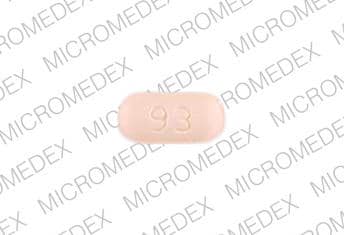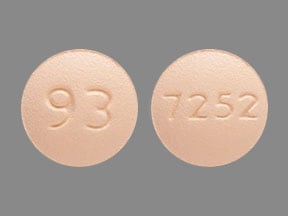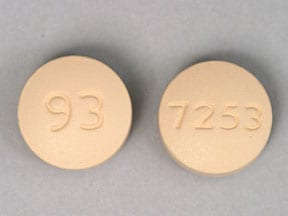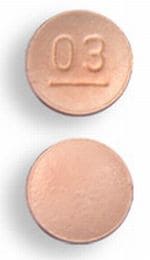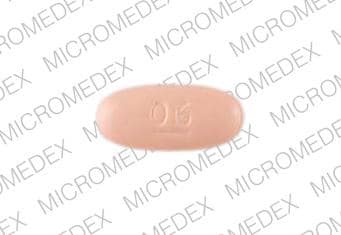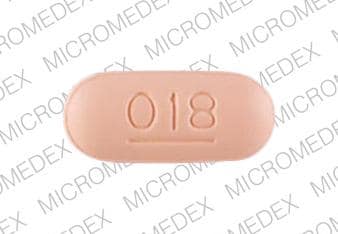Dosage Forms
Excipient information presented when available (limited, particularly for generics); consult specific product labeling. [DSC] = Discontinued product
Suspension, Oral, as hydrochloride:
Allegra Allergy Childrens: 30 mg/5 mL (240 mL) [alcohol free, dye free; contains butylparaben, edetate disodium, propylene glycol, propylparaben; berry flavor]
Allegra Allergy Childrens: 30 mg/5 mL (120 mL) [alcohol free, dye free; contains butylparaben, edetate disodium, propylene glycol, propylparaben; raspberry creme flavor]
Fexofenadine HCl Childrens: 30 mg/5 mL (118 mL [DSC]) [alcohol free, dye free; contains butylparaben, edetate disodium, propylene glycol, propylparaben]
Fexofenadine HCl Childrens: 30 mg/5 mL (118 mL [DSC]) [alcohol free, dye free; contains butylparaben, edetate disodium, propylene glycol, propylparaben; berry flavor]
Tablet, Oral, as hydrochloride:
Allegra Allergy: 60 mg, 180 mg
Allegra Allergy: 180 mg [contains brilliant blue fcf (fd&c blue #1)]
Allergy 24-HR: 180 mg
Allergy Relief: 180 mg
Mucinex Allergy: 180 mg [DSC] [contains fd&c red #40]
Generic: 60 mg, 180 mg
Tablet Disintegrating, Oral, as hydrochloride:
Allegra Allergy Childrens: 30 mg [contains aspartame; orange cream flavor]
Pharmacology
Mechanism of Action
Fexofenadine is an active metabolite of terfenadine and like terfenadine it competes with histamine for H1-receptor sites on effector cells in the gastrointestinal tract, blood vessels and respiratory tract; it appears that fexofenadine does not cross the blood-brain barrier to any appreciable degree, resulting in a reduced potential for sedation
Pharmacokinetics/Pharmacodynamics
Absorption
Rapid
Metabolism
Minimal (Hepatic ~5%); 3.6% transformed into methylester metabolite found only in feces
Excretion
Feces (80%) and urine (12%) as unchanged drug (Simons 2004)
Onset of Action
2 hours (Simons 2004)
Time to Peak
Serum: ODT: 2 hours (4 hours with high-fat meal); Tablet: ~2.6 hours (Simons 2004); Suspension: ~1 hour
Duration of Action
24 hours (Simons 2004)
Half-Life Elimination
14.4 hours (59% longer in patients with mild to moderate renal impairment [CrCl 41 to 80 mL/minute]; 72% longer in patients with severe renal impairment [CrCl 11 to 40 mL/minute]) (Markham 1998; Simons 2004)
Protein Binding
60% to 70% (Markham 1998); primarily albumin and alpha1-acid glycoprotein
Use in Specific Populations
Special Populations: Renal Function Impairment
Mild to moderate impairment with CrCl 41 to 80 mL/minute has an 87% increase in Cmax. Severe impairment with CrCl 11 to 40 mL/minute has a 111% increase in Cmax.
Special Populations: Elderly
Cmax is increased 99%.
Use: Labeled Indications
Upper respiratory allergies: Temporary relief of runny nose, sneezing, itching of the nose or throat, and/or itchy, watery eyes due to hay fever or other upper respiratory allergies.
Use: Off Label
Chronic idiopathic urticariaayes
Data from a multicenter, randomized, double-blind, placebo-controlled study suggest that fexofenadine is effective in the treatment of chronic idiopathic urticaria Kaplan 2005.
A joint guideline published by the American Academy of Allergy, Asthma, & Immunology (AAAAI) and American College of Allergy, Asthma, and Immunology (ACAAI) recommend second-generation antihistamines as first-line therapy in the treatment of patients with chronic urticaria Bernstein 2014.
Contraindications
OTC labeling: When used for self-medication do not use if you ever had an allergic reaction to fexofenadine or any component of the formulation.
Documentation of allergenic cross-reactivity for antihistamines is limited. However, because of similarities in chemical structure and/or pharmacologic actions, the possibility of cross-sensitivity can not be ruled out with certainty.
Dosage and Administration
Dosing: Adult
Upper respiratory allergies: Oral:
Twice daily formulations: 60 mg every 12 hours (maximum: 120 mg/day)
Once daily formulations: 180 mg once daily (maximum: 180 mg/day)
Chronic idiopathic urticaria (off-label use): Oral: 180 mg once daily (Kaplan 2005) or 60 mg twice daily (range: 20 to 240 mg twice daily (Finn 1999)
Dosing: Geriatric
Refer to adult dosing.
Dosing: Pediatric
Allergic symptoms/rhinitis: Oral:
Infants ≥6 months and <10.5 kg: Limited data available: Oral suspension: 15 mg twice daily. Dosing from a safety and tolerability study of infants with allergic rhinitis (n=58; mean age: 8.8 ± 1.6 months); adverse events were similar compared to placebo. Note: Five patients received 30 mg twice daily, which also had similar adverse effects compared to placebo (Hampell 2007).
Children ≤2 years and <10.5 kg: Limited data available: Oral suspension: 15 to 30 mg twice daily. Dosing from a safety and tolerability study of patients with allergic rhinitis receiving fexofenadine 15 mg twice daily (n=27; mean age: 16.1 months) or fexofenadine 30 mg twice daily (n=103; mean age: 17.9 ± 3.2 months) compared to placebo. Adverse events were similar between patients receiving fexofenadine and patients receiving placebo (Hampell 2007).
Children 2 to 11 years: Oral suspension or orally disintegrating tablet (ODT): 30 mg twice daily
Children ≥12 years and Adolescents:
Tablets, orally disintegrating tablet (ODT): 60 mg twice daily
Extended release tablet: 180 mg once daily
Chronic idiopathic urticaria: Note: Dosing based on previous FDA approved manufacturer labeling (Allegra prescribing information 2007): Oral:
Infants ≥6 months to Children <2 years: Oral suspension: 15 mg twice daily
Children 2 to 11 years: Oral suspension or orally disintegrating tablet (ODT): 30 mg twice daily
Children ≥12 years and Adolescents:
Tablets, orally disintegrating tablet (ODT): 60 mg twice daily
Extended release tablet: 180 mg once daily
Administration
Orally disintegrating tablet: Administer on an empty stomach. Remove tablet from individual blister and place immediately on tongue; tablet will disintegrate with or without water (do not administer with fruit juices).
Oral suspension, tablet: Administer with water only; do not administer with fruit juices. Shake suspension well before use. Use suspension only with enclosed dosing cup.
Dietary Considerations
Some products may contain phenylalanine and/or sodium. Take suspension and tablets preferably with water; separate administration with grapefruit or other fruit juices by at least 4 hours.
Storage
Store at 20°C to 25°C (68°F to 77°F). Use orally disintegrating tablet immediately after opening individual blister.
Fexofenadine Images
Drug Interactions
Acetylcholinesterase Inhibitors: May diminish the therapeutic effect of Anticholinergic Agents. Anticholinergic Agents may diminish the therapeutic effect of Acetylcholinesterase Inhibitors. Monitor therapy
Aclidinium: May enhance the anticholinergic effect of Anticholinergic Agents. Avoid combination
Alcohol (Ethyl): CNS Depressants may enhance the CNS depressant effect of Alcohol (Ethyl). Monitor therapy
Alizapride: May enhance the CNS depressant effect of CNS Depressants. Monitor therapy
Amantadine: May enhance the anticholinergic effect of Anticholinergic Agents. Monitor therapy
Amezinium: Antihistamines may enhance the stimulatory effect of Amezinium. Monitor therapy
Amphetamines: May diminish the sedative effect of Antihistamines. Monitor therapy
Antacids: May decrease the serum concentration of Fexofenadine. Management: Separate the administration of fexofenadine and aluminum- or magnesium-containing antacids. Exceptions: Calcium Carbonate; Magaldrate; Sodium Bicarbonate. Consider therapy modification
Anticholinergic Agents: May enhance the adverse/toxic effect of other Anticholinergic Agents. Monitor therapy
Apalutamide: May decrease the serum concentration of Fexofenadine. Monitor therapy
Azelastine (Nasal): CNS Depressants may enhance the CNS depressant effect of Azelastine (Nasal). Avoid combination
Benzylpenicilloyl Polylysine: Antihistamines may diminish the diagnostic effect of Benzylpenicilloyl Polylysine. Management: Suspend systemic H1 antagonists for benzylpenicilloyl-polylysine skin testing and delay testing until systemic antihistaminic effects have dissipated. A histamine skin test may be used to assess persistent antihistaminic effects. Consider therapy modification
Betahistine: Antihistamines may diminish the therapeutic effect of Betahistine. Monitor therapy
Blonanserin: CNS Depressants may enhance the CNS depressant effect of Blonanserin. Consider therapy modification
Botulinum Toxin-Containing Products: May enhance the anticholinergic effect of Anticholinergic Agents. Monitor therapy
Brexanolone: CNS Depressants may enhance the CNS depressant effect of Brexanolone. Monitor therapy
Brimonidine (Topical): May enhance the CNS depressant effect of CNS Depressants. Monitor therapy
Bromopride: May enhance the CNS depressant effect of CNS Depressants. Monitor therapy
Bromperidol: May enhance the CNS depressant effect of CNS Depressants. Avoid combination
Buprenorphine: CNS Depressants may enhance the CNS depressant effect of Buprenorphine. Management: Consider reduced doses of other CNS depressants, and avoiding such drugs in patients at high risk of buprenorphine overuse/self-injection. Initiate buprenorphine at lower doses in patients already receiving CNS depressants. Consider therapy modification
Cannabidiol: May enhance the CNS depressant effect of CNS Depressants. Monitor therapy
Cannabis: May enhance the CNS depressant effect of CNS Depressants. Monitor therapy
Chloral Betaine: May enhance the adverse/toxic effect of Anticholinergic Agents. Monitor therapy
Chlormethiazole: May enhance the CNS depressant effect of CNS Depressants. Management: Monitor closely for evidence of excessive CNS depression. The chlormethiazole labeling states that an appropriately reduced dose should be used if such a combination must be used. Consider therapy modification
Chlorphenesin Carbamate: May enhance the adverse/toxic effect of CNS Depressants. Monitor therapy
Cimetropium: Anticholinergic Agents may enhance the anticholinergic effect of Cimetropium. Avoid combination
CNS Depressants: May enhance the adverse/toxic effect of other CNS Depressants. Monitor therapy
Dimethindene (Topical): May enhance the CNS depressant effect of CNS Depressants. Monitor therapy
Doxylamine: May enhance the CNS depressant effect of CNS Depressants. Management: The manufacturer of Diclegis (doxylamine/pyridoxine), intended for use in pregnancy, specifically states that use with other CNS depressants is not recommended. Monitor therapy
Dronabinol: May enhance the CNS depressant effect of CNS Depressants. Monitor therapy
Droperidol: May enhance the CNS depressant effect of CNS Depressants. Management: Consider dose reductions of droperidol or of other CNS agents (eg, opioids, barbiturates) with concomitant use. Exceptions to this monograph are discussed in further detail in separate drug interaction monographs. Consider therapy modification
Eltrombopag: May increase the serum concentration of OATP1B1/1B3 (SLCO1B1/1B3) Substrates. Monitor therapy
Eluxadoline: Anticholinergic Agents may enhance the constipating effect of Eluxadoline. Avoid combination
Erdafitinib: May increase the serum concentration of P-glycoprotein/ABCB1 Substrates. Monitor therapy
Erythromycin (Systemic): May increase the serum concentration of Fexofenadine. Monitor therapy
Esketamine: May enhance the CNS depressant effect of CNS Depressants. Monitor therapy
Flunitrazepam: CNS Depressants may enhance the CNS depressant effect of Flunitrazepam. Consider therapy modification
Gastrointestinal Agents (Prokinetic): Anticholinergic Agents may diminish the therapeutic effect of Gastrointestinal Agents (Prokinetic). Monitor therapy
Gemfibrozil: May increase the serum concentration of OATP1B1/1B3 (SLCO1B1/1B3) Substrates. See separate drug interaction monographs for agents listed as exceptions. Monitor therapy
Glucagon: Anticholinergic Agents may enhance the adverse/toxic effect of Glucagon. Specifically, the risk of gastrointestinal adverse effects may be increased. Monitor therapy
Glycopyrrolate (Oral Inhalation): Anticholinergic Agents may enhance the anticholinergic effect of Glycopyrrolate (Oral Inhalation). Avoid combination
Glycopyrronium (Topical): May enhance the anticholinergic effect of Anticholinergic Agents. Avoid combination
Grapefruit Juice: May decrease the serum concentration of Fexofenadine. Monitor therapy
Hyaluronidase: Antihistamines may diminish the therapeutic effect of Hyaluronidase. Management: Patients receiving antihistamines (particularly at larger doses) may not experience the desired clinical response to standard doses of hyaluronidase. Larger doses of hyaluronidase may be required. Consider therapy modification
HYDROcodone: CNS Depressants may enhance the CNS depressant effect of HYDROcodone. Management: Avoid concomitant use of hydrocodone and benzodiazepines or other CNS depressants when possible. These agents should only be combined if alternative treatment options are inadequate. If combined, limit the dosages and duration of each drug. Consider therapy modification
HydrOXYzine: May enhance the CNS depressant effect of CNS Depressants. Monitor therapy
Ipratropium (Oral Inhalation): May enhance the anticholinergic effect of Anticholinergic Agents. Avoid combination
Itopride: Anticholinergic Agents may diminish the therapeutic effect of Itopride. Monitor therapy
Itraconazole: May increase the serum concentration of Fexofenadine. Monitor therapy
Kava Kava: May enhance the adverse/toxic effect of CNS Depressants. Monitor therapy
Ketoconazole (Systemic): May increase the serum concentration of Fexofenadine. Monitor therapy
Lasmiditan: May increase the serum concentration of P-glycoprotein/ABCB1 Substrates. Avoid combination
Lemborexant: May enhance the CNS depressant effect of CNS Depressants. Management: Dosage adjustments of lemborexant and of concomitant CNS depressants may be necessary when administered together because of potentially additive CNS depressant effects. Close monitoring for CNS depressant effects is necessary. Consider therapy modification
Levosulpiride: Anticholinergic Agents may diminish the therapeutic effect of Levosulpiride. Avoid combination
Lofexidine: May enhance the CNS depressant effect of CNS Depressants. Management: Drugs listed as exceptions to this monograph are discussed in further detail in separate drug interaction monographs. Monitor therapy
Lumacaftor and Ivacaftor: May decrease the serum concentration of P-glycoprotein/ABCB1 Substrates. Lumacaftor and Ivacaftor may increase the serum concentration of P-glycoprotein/ABCB1 Substrates. Monitor therapy
Magnesium Sulfate: May enhance the CNS depressant effect of CNS Depressants. Monitor therapy
Methotrimeprazine: CNS Depressants may enhance the CNS depressant effect of Methotrimeprazine. Methotrimeprazine may enhance the CNS depressant effect of CNS Depressants. Management: Reduce adult dose of CNS depressant agents by 50% with initiation of concomitant methotrimeprazine therapy. Further CNS depressant dosage adjustments should be initiated only after clinically effective methotrimeprazine dose is established. Consider therapy modification
MetyroSINE: CNS Depressants may enhance the sedative effect of MetyroSINE. Monitor therapy
Mianserin: May enhance the anticholinergic effect of Anticholinergic Agents. Monitor therapy
Minocycline (Systemic): May enhance the CNS depressant effect of CNS Depressants. Monitor therapy
Mirabegron: Anticholinergic Agents may enhance the adverse/toxic effect of Mirabegron. Monitor therapy
Nabilone: May enhance the CNS depressant effect of CNS Depressants. Monitor therapy
Nitroglycerin: Anticholinergic Agents may decrease the absorption of Nitroglycerin. Specifically, anticholinergic agents may decrease the dissolution of sublingual nitroglycerin tablets, possibly impairing or slowing nitroglycerin absorption. Monitor therapy
Opioid Agonists: CNS Depressants may enhance the CNS depressant effect of Opioid Agonists. Management: Avoid concomitant use of opioid agonists and benzodiazepines or other CNS depressants when possible. These agents should only be combined if alternative treatment options are inadequate. If combined, limit the dosages and duration of each drug. Consider therapy modification
Orphenadrine: CNS Depressants may enhance the CNS depressant effect of Orphenadrine. Avoid combination
Oxatomide: May enhance the anticholinergic effect of Anticholinergic Agents. Avoid combination
Oxomemazine: May enhance the CNS depressant effect of CNS Depressants. Avoid combination
OxyCODONE: CNS Depressants may enhance the CNS depressant effect of OxyCODONE. Management: Avoid concomitant use of oxycodone and benzodiazepines or other CNS depressants when possible. These agents should only be combined if alternative treatment options are inadequate. If combined, limit the dosages and duration of each drug. Consider therapy modification
Paraldehyde: CNS Depressants may enhance the CNS depressant effect of Paraldehyde. Avoid combination
Perampanel: May enhance the CNS depressant effect of CNS Depressants. Management: Patients taking perampanel with any other drug that has CNS depressant activities should avoid complex and high-risk activities, particularly those such as driving that require alertness and coordination, until they have experience using the combination. Consider therapy modification
P-glycoprotein/ABCB1 Inducers: May decrease the serum concentration of P-glycoprotein/ABCB1 Substrates. P-glycoprotein inducers may also further limit the distribution of p-glycoprotein substrates to specific cells/tissues/organs where p-glycoprotein is present in large amounts (e.g., brain, T-lymphocytes, testes, etc.). Monitor therapy
P-glycoprotein/ABCB1 Inhibitors: May increase the serum concentration of P-glycoprotein/ABCB1 Substrates. P-glycoprotein inhibitors may also enhance the distribution of p-glycoprotein substrates to specific cells/tissues/organs where p-glycoprotein is present in large amounts (e.g., brain, T-lymphocytes, testes, etc.). Monitor therapy
Piribedil: CNS Depressants may enhance the CNS depressant effect of Piribedil. Monitor therapy
Pitolisant: Antihistamines may diminish the therapeutic effect of Pitolisant. Avoid combination
Potassium Chloride: Anticholinergic Agents may enhance the ulcerogenic effect of Potassium Chloride. Management: Patients on drugs with substantial anticholinergic effects should avoid using any solid oral dosage form of potassium chloride. Avoid combination
Potassium Citrate: Anticholinergic Agents may enhance the ulcerogenic effect of Potassium Citrate. Avoid combination
Pramipexole: CNS Depressants may enhance the sedative effect of Pramipexole. Monitor therapy
Pramlintide: May enhance the anticholinergic effect of Anticholinergic Agents. These effects are specific to the GI tract. Consider therapy modification
Ramosetron: Anticholinergic Agents may enhance the constipating effect of Ramosetron. Monitor therapy
Ranolazine: May increase the serum concentration of P-glycoprotein/ABCB1 Substrates. Monitor therapy
Revefenacin: Anticholinergic Agents may enhance the anticholinergic effect of Revefenacin. Avoid combination
RifAMPin: May decrease the serum concentration of Fexofenadine. RifAMPin may increase the serum concentration of Fexofenadine. Monitor therapy
ROPINIRole: CNS Depressants may enhance the sedative effect of ROPINIRole. Monitor therapy
Rotigotine: CNS Depressants may enhance the sedative effect of Rotigotine. Monitor therapy
Rufinamide: May enhance the adverse/toxic effect of CNS Depressants. Specifically, sleepiness and dizziness may be enhanced. Monitor therapy
Secretin: Anticholinergic Agents may diminish the therapeutic effect of Secretin. Management: Avoid concomitant use of anticholinergic agents and secretin. Discontinue anticholinergic agents at least 5 half-lives prior to administration of secretin. Consider therapy modification
Selective Serotonin Reuptake Inhibitors: CNS Depressants may enhance the adverse/toxic effect of Selective Serotonin Reuptake Inhibitors. Specifically, the risk of psychomotor impairment may be enhanced. Monitor therapy
Sodium Oxybate: May enhance the CNS depressant effect of CNS Depressants. Management: Consider alternatives to combined use. When combined use is needed, consider minimizing doses of one or more drugs. Use of sodium oxybate with alcohol or sedative hypnotics is contraindicated. Consider therapy modification
Suvorexant: CNS Depressants may enhance the CNS depressant effect of Suvorexant. Management: Dose reduction of suvorexant and/or any other CNS depressant may be necessary. Use of suvorexant with alcohol is not recommended, and the use of suvorexant with any other drug to treat insomnia is not recommended. Consider therapy modification
Tapentadol: May enhance the CNS depressant effect of CNS Depressants. Management: Avoid concomitant use of tapentadol and benzodiazepines or other CNS depressants when possible. These agents should only be combined if alternative treatment options are inadequate. If combined, limit the dosages and duration of each drug. Consider therapy modification
Teriflunomide: May increase the serum concentration of OATP1B1/1B3 (SLCO1B1/1B3) Substrates. Monitor therapy
Tetrahydrocannabinol: May enhance the CNS depressant effect of CNS Depressants. Monitor therapy
Tetrahydrocannabinol and Cannabidiol: May enhance the CNS depressant effect of CNS Depressants. Monitor therapy
Thalidomide: CNS Depressants may enhance the CNS depressant effect of Thalidomide. Avoid combination
Thiazide and Thiazide-Like Diuretics: Anticholinergic Agents may increase the serum concentration of Thiazide and Thiazide-Like Diuretics. Monitor therapy
Tiotropium: Anticholinergic Agents may enhance the anticholinergic effect of Tiotropium. Avoid combination
Tolvaptan: May increase the serum concentration of OATP1B1/1B3 (SLCO1B1/1B3) Substrates. Consider therapy modification
Topiramate: Anticholinergic Agents may enhance the adverse/toxic effect of Topiramate. Monitor therapy
Trimeprazine: May enhance the CNS depressant effect of CNS Depressants. Monitor therapy
Umeclidinium: May enhance the anticholinergic effect of Anticholinergic Agents. Avoid combination
Verapamil: May increase the serum concentration of Fexofenadine. Monitor therapy
Zolpidem: CNS Depressants may enhance the CNS depressant effect of Zolpidem. Management: Reduce the Intermezzo brand sublingual zolpidem adult dose to 1.75 mg for men who are also receiving other CNS depressants. No such dose change is recommended for women. Avoid use with other CNS depressants at bedtime; avoid use with alcohol. Consider therapy modification
Test Interactions
May suppress the wheal and flare reactions to skin test antigens.
Adverse Reactions
>10%:
Central nervous system: Headache (5% to 11%)
Gastrointestinal: Vomiting (children 6 months to 5 years: 4% to 12%)
1% to 10%:
Central nervous system: Drowsiness (1% to 3%), fatigue (1% to 3%), dizziness (2%), pain (2%)
Gastrointestinal: Diarrhea (3% to 4%), nausea (2%), dyspepsia (1% to 2%)
Genitourinary: Dysmenorrhea (2%)
Infection: Viral infection (3%)
Neuromuscular & skeletal: Myalgia (3%), back pain (2% to 3%), limb pain (2%)
Otic: Otitis media (2% to 4%)
Respiratory: Upper respiratory tract infection (3% to 4%), cough (2% to 4%), rhinorrhea (1% to 2%)
Miscellaneous: Fever (2%)
<1%, postmarketing, and/or case reports: Hypersensitivity reaction (including anaphylaxis, angioedema, chest tightness, dyspnea, flushing, pruritus, skin rash, urticaria), insomnia, nervousness, nightmares, sleep disorder
Warnings/Precautions
Disease-related concerns:
- Renal impairment: Use with caution in patients with renal impairment; dosage adjustment may be recommended.
Concurrent drug therapy issues:
- Drug-drug interactions: Potentially significant interactions may exist, requiring dose or frequency adjustment, additional monitoring, and/or selection of alternative therapy. Consult drug interactions database for more detailed information.
Dosage form specific issues:
- Orally disintegrating tablet: Some products may contain phenylalanine.
Other warnings/precautions:
- OTC labeling: When used for self-medication (OTC), do not exceed recommended dosage or administer at the same time with aluminum or magnesium antacids or with fruit juices.
Monitoring Parameters
Relief of symptoms
Pregnancy
Pregnancy Considerations
Limited information is available related to the use of fexofenadine in pregnancy. When a second generation antihistamine is needed, other agents with more information available regarding their use in pregnancy are currently preferred (Murase 2014; Powell 2015; Scadding 2008; Wallace 2008; Zuberbier 2014).
Patient Education
What is this drug used for?
- It is used to ease allergy signs.
- It is used to treat hives.
Frequently reported side effects of this drug
- Headache
- Signs of a significant reaction like wheezing; chest tightness; fever; itching; bad cough; blue skin color; seizures; or swelling of face, lips, tongue, or throat.
Note: This is not a comprehensive list of all side effects. Talk to your doctor if you have questions.
Consumer Information Use and Disclaimer: This information should not be used to decide whether or not to take this medicine or any other medicine. Only the healthcare provider has the knowledge and training to decide which medicines are right for a specific patient. This information does not endorse any medicine as safe, effective, or approved for treating any patient or health condition. This is only a brief summary of general information about this medicine. It does NOT include all information about the possible uses, directions, warnings, precautions, interactions, adverse effects, or risks that may apply to this medicine. This information is not specific medical advice and does not replace information you receive from the healthcare provider. You must talk with the healthcare provider for complete information about the risks and benefits of using this medicine.
